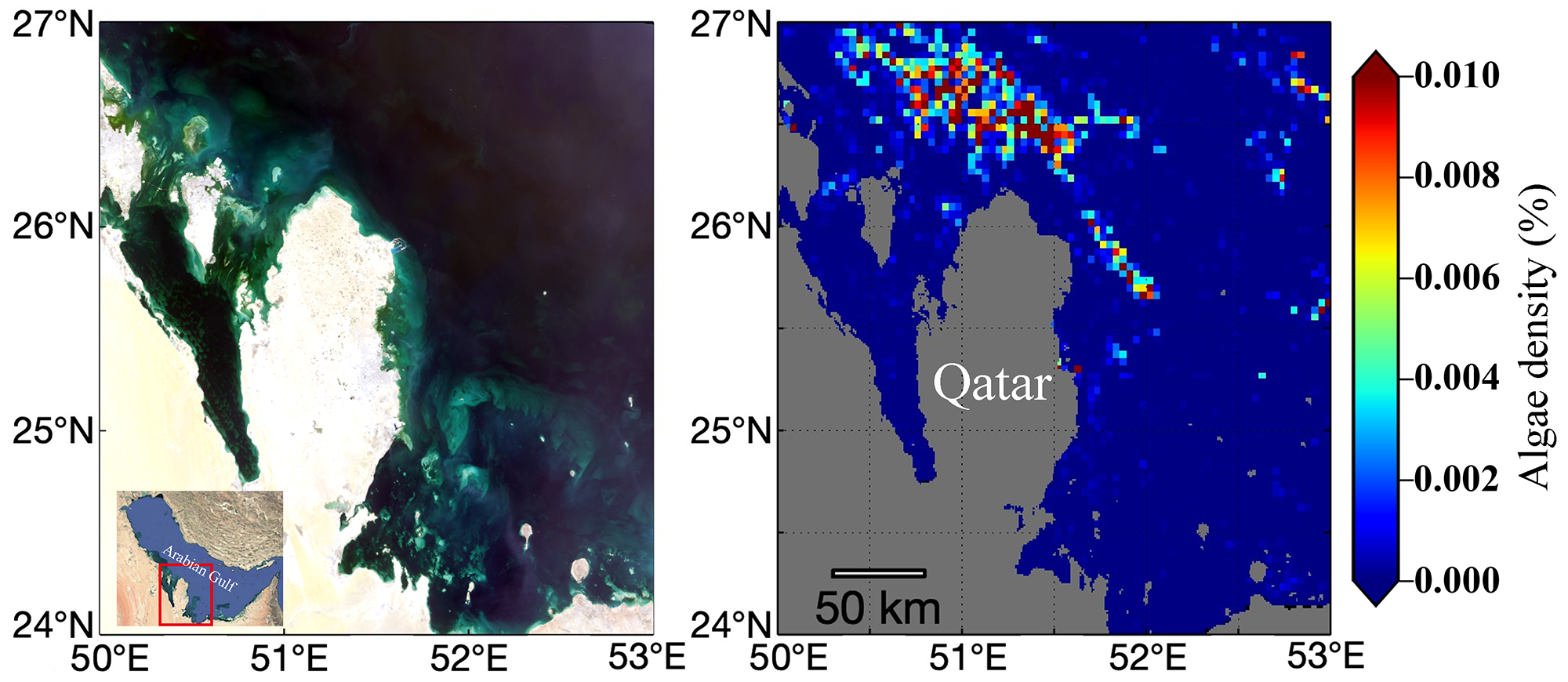
Cheng Xue, postdoctoral scholar at USF CMS
“Qatar in the Arabian/Persian Gulf is one of the countries with the fastest economic growth and relies on seawater as its most important water source. The country’s fast development caused concerns about its coastal water quality because these waters are under the pressure of harmful algal blooms, ocean warming, hypoxia, and coastal pollution. The difficulty in monitoring water quality changes is due to the lack of sufficient field measurements across political boundaries. We overcome this challenge by using the state-of-the-art satellite remote sensing, which provided data for over two decades. We examined spatial/seasonal variations and assessed long-term trends of water-column chlorophyll concentration, turbidity, water clarity, temperature, and surface algae scums. While most of these water quality parameters showed no dramatic long-term trends, water temperature showed much higher warming rate than the adjacent seas such as the Arabian Sea and Red Sea. Whether such a trend will continue in the future to favor algal blooms requires a long-term monitoring program. We will continue to assess the coastal water quality around Qatar and the Arabian/Persian Gulf. Meanwhile, our lab produces and shares satellite imagery on a website in near real-time with daily updates.”
Remote sensing of water quality in Qatari coastal waters between 2002 and 2022
